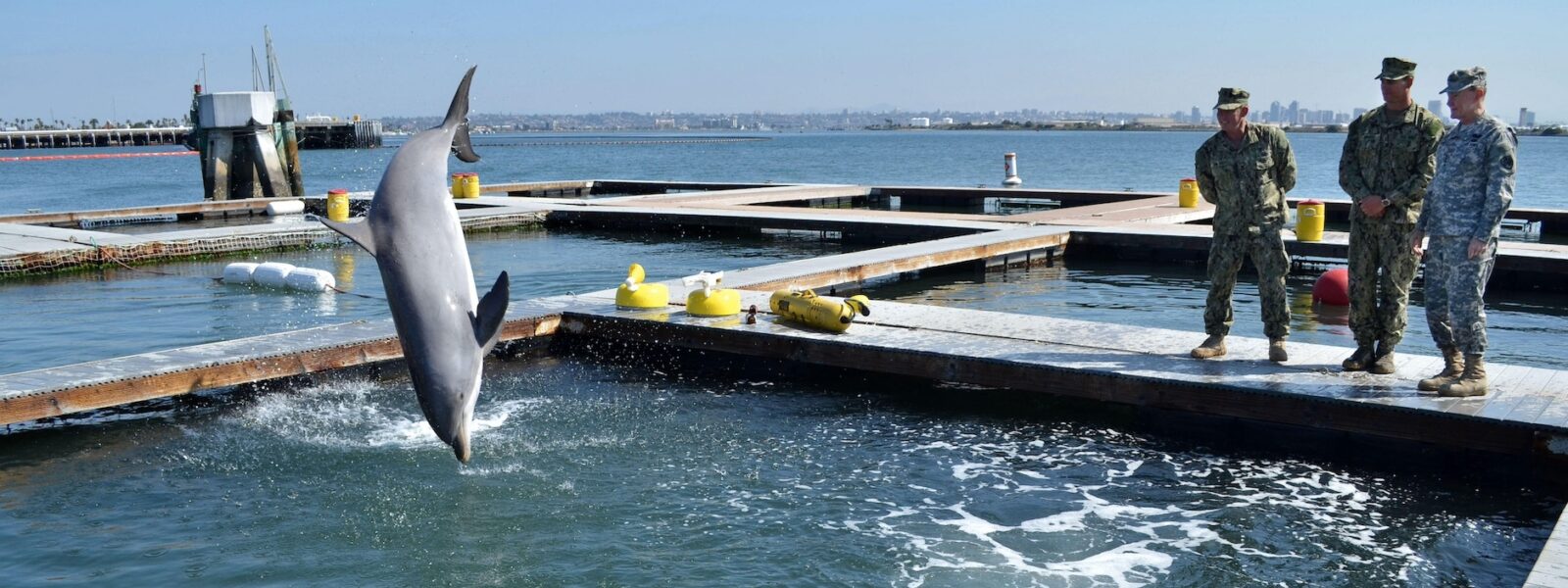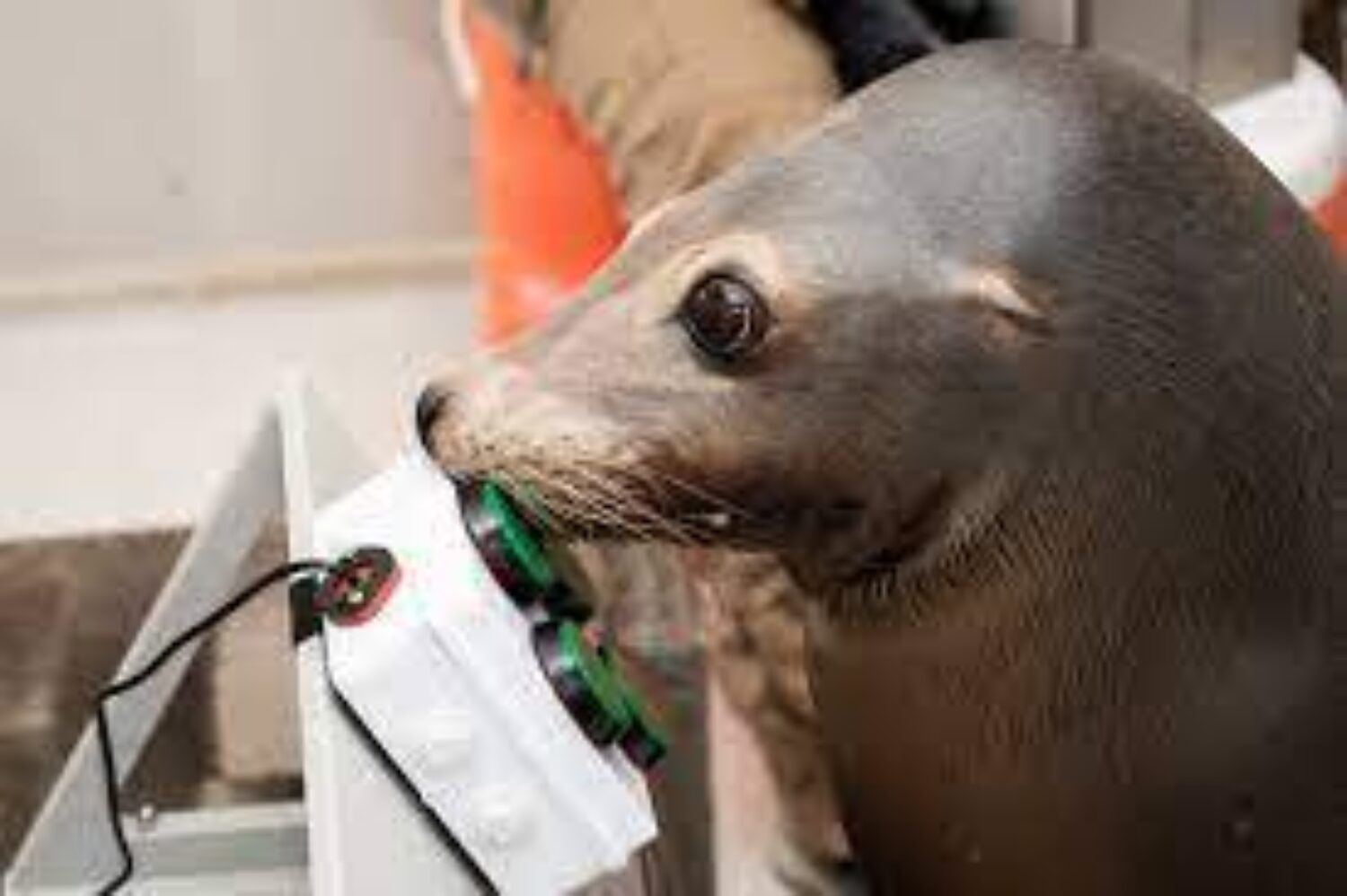
Should Dolphins Go to War for Us? Part 2
By Riley Freitas
The Ethical Dilemmas of the U.S. Navy’s Marine Mammal Program
Riley Freitas is an intern for the International Marine Mammal Project of Earth Island Institute. She is a graduate of the University of California with a Bachelor of Science in Conservation and Resource Studies. Within this major, she created her own area of interest: Marine Conservation and Policy.
Should Dolphins Go to War for Us? Part 1
Following up on our exploration into the U.S. Navy’s Marine Mammal Program, we uncover the legislative and financial aspects that have shaped this intriguing – and dubious – initiative.
Beginning in 1986 with a noteworthy change in the 1972 Marine Mammal Protection Act (MMPA), which allowed the Navy to collect wild dolphins and sea lions for national defense purposes, we follow the journey through budget cuts post-Cold War, legislative decisions, and the ongoing dance through ethics and practicalities. From the steep budget of $8 million following the amendments to the MMPA to the current allocation of $40 million, let’s discuss the financial and legislative shifts that continue to be influenced by public opinion, technological advancements, military strategic deliberations and ethical considerations that have so far shaped this program.
Beginning in 1986, the Marine Mammal Program saw a drastic expansion of its budget, which aimed to support the Navy’s success during the Cold War. Once the Cold War concluded in the 1990s, the program lost a large chunk of its funding, which led to all but one of its training centers being shut down. Simultaneously, this led to some declassification of the program.
With the program on its path to closure, the 1992 Defense Appropriations Act allowed Congress to financially aid this process. They were able to allot half a million dollars to the Navy: “to develop training procedures required for this project (for marine mammals) to be released into their natural habitat.” With this budget the Navy gathered researchers and experts to discuss the effectiveness of a reintroduction program, but they concluded that the program would not be cost effective, basically ignoring the welfare of the marine mammals. Instead, in an attempt to downsize their dolphin population, the Navy offered their trained dolphins to marine parks. With little to no interest shown by the marine parks, which are already full of dolphins, the dolphins remained in Navy hands, captive in San Diego in small sea pens.
Although the program continued on without any releases, reports were made again in 2016 that claimed the marine mammal program was in the process of being phased out. These claims were backed by the promise that new advanced technology was going to perform the tasks the cetaceans were trained to do. Specifically, modern electronic underwater drones were supposed to take the place of trained dolphins and sea lions.

A sea lion presses a green button with its nose as part of a training exercise. Photo Credit: US Navy
A significant recent amendment occurred in 2018, emphasizing the prohibition on discontinuing elements of the program used for port security and mine search capabilities, as drone technology fell short. Congress specifically outlined that “the Secretary of the Navy may not obligate or expend funds to discontinue or prepare to discontinue, including making a substantive reduction in training and operational employment, any element of the Marine Mammal Program of the Navy, that has been used, or is currently being used.” Alongside this amendment, they made it clear that there is currently no technology that can perform anywhere near the skills of marine mammals, shutting down the hope, at that time, of phasing out the program.
In 2022, the Navy again sought to end another one of their missions - locating and neutralizing mines with marine mammals. They planned to use advanced underwater vehicles and sensors; however, this technology could not yet match the unique ability of dolphins in locating mines.
The reason why dolphins and sea lions can outperform most technologies is due to their quick “detect to engage” sequence, to use the military jargon. Unlike existing robot methods that have to follow a predetermined set of decisions, these marine mammals have a natural ability to streamline this process by tapping on paddles to promptly alert their trainer upon detecting a suspected mine.
In response, Congress again utilized the 2023 defense bill to prevent the Navy from retiring these mine-detecting dolphins or ending port-security training until the Navy can provide sufficient evidence of technology that is as good or better. Also, within this bill, the Navy Marine Mammal Program was delegated a $40 million budget to cover food, medical care, facilities, mission costs, research, and employment of 54 Navy civilians, 6 Army veterinarians, 220 contractors, and 22 students, all to support their 77 captive dolphins and 47 captive sea lions at the San Diego base.
Also important is the fact that Russia, and possibly other countries, have trained dolphins and other marine mammals to protect ships in port, just like the US Navy program. Reportedly, trained dolphins are being used in the Ukraine war to protect Russian naval ships in ports in the Black Sea.
A beluga whale showed up in Norway a few years ago that was friendly with fishermen and had a strange harness labeled “St. Petersburg”. Vladimir the beluga, named after President Putin of Russia and the Norwegian word for whale, has since been monitored by volunteers and observed swimming around the Atlantic Ocean off Scandinavia. While denied by the Russian government, experts believe Vladimir escaped from some kind of Russian military dolphin program in the Arctic.
As we continue to delve into the intricacies of the U.S. Navy’s Marine Mammal Program, it becomes clear that a dynamic approach is needed to address the challenges it faces. The constant changes in legislation, budgeting, and technology underscore the necessity for a forward-looking strategy. With the large budget that the program was recently given, it would be wise to redirect this funding into research and development of alternative technologies that can perform specialized tasks with efficiency equal to that of marine mammals.
Simultaneously, it is crucial to continue to monitor and question the program’s ethics and fair treatment of the marine mammals that the Navy has in its control. Collaboration between experts in marine biology, robotics, and ethics can foster the creation of a transition plan that is both sustainable and ethically grounded. This foundation can guarantee the program’s flexibility in response to evolving requirements while remaining responsible and compassionate towards marine life.
Eventually, this program must be shut down, and the dolphins and sea lions retired to seaside sanctuaries. A return to the ocean where the animals were originally caught is possible, although animals born in captivity or held in captivity for many years are considered poor prospects to survive in the ocean.
But shouldn’t we put the welfare of these long-suffering animals first?
*************************************
